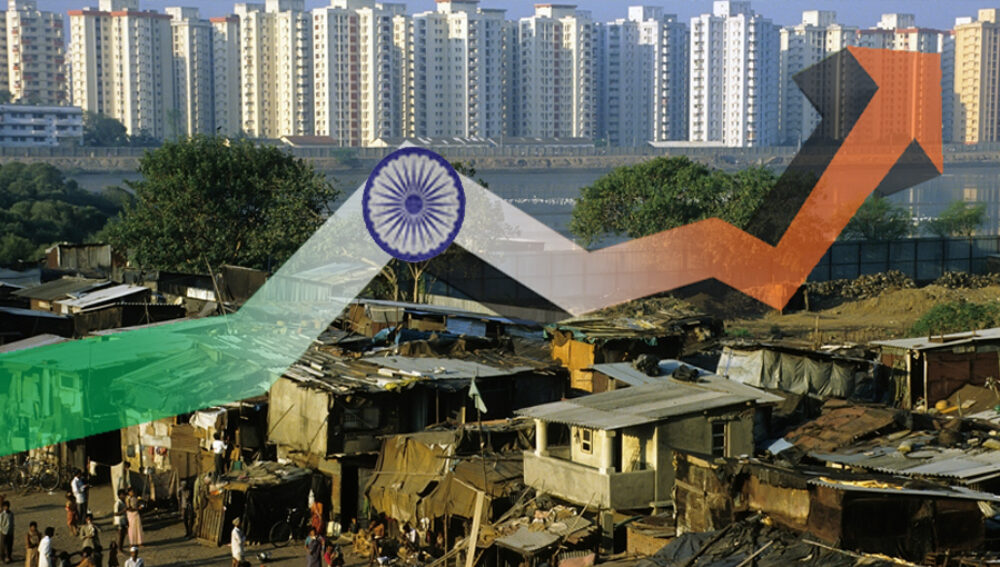In recent years, India has acquired the mantle of the fastest growing economy in the world. Its convergence with respect to both China and the rich countries is expected to continue unabated, although significant income gaps will still persist. From that perspective, India will have a lot to be proud about when it celebrates the centenary of its birth as an independent nation within 30 years.
Indian policy-makers should not, however, succumb to ‘growth fetishism’ by making the optimistic assumption that the economy can grow in the 7 to 8 per cent range for decades. This is what ‘official India’ seems to believe. For example, Ravi Kumar, Vice Chair of NITI AYOG proclaims: ‘I think (Indian growth) is more than 8 percent in the long run and then going on to 10’. Raghu Rajan, former Governor of the Federal Reserve Bank of India, concurs: ‘Without doing anything extraordinary, India should be running at 7.5 to 8 percent real GDP growth a year…. (But) India needs stronger growth than that. It needs to get to…10 percent….’
This is unlikely to happen because growth typically slows down as a nation gets richer and there is considerable evidence of ‘regression to the mean’. Furthermore, growth is necessary but not sufficient to bring about sustained improvements in human development, labour market and social indicators.
Despite the recent growth slow-down, Indian short-term growth prospects appear very robust indeed and is around the 8 per cent range. The available data – derived from IMF data mapper – also shows that India is expected to outpace Chinese growth over the next 3 to 5 years – see Figure 1.

Figure 1
To the extent that one can believe in the robustness of long run growth projections that covers nearly 50 years, it appears that the Indian economy will begin to slow down over the next 10 years and growth will hover in the 3 to 4 per cent range in the long run – see Figure 2. This is, not of course, unique to India. As countries grow richer, they also grow more slowly. This is even true of China which grew at historically unprecedented rates for many years. Even if it grows in the 3 to 4 per cent range in the long-term, India is expected to occupy a top position in the growth league table and surpass that of China.

Figure 2
While India can be justifiably proud of earning the accolade of being among the fastest growing economies in the world for many years to come, what impact will that have on the country’s ability to converge to the living standards of both China and the rich countries of the world? In many respects, there will be a significant degree of convergence, but absolute differences in living standards will persist a great deal. To start with, India’s contribution to global GDP (as measured in 1995 PPP US dollars) is expected to expand significantly rising from 7 per cent of world GDP in 2011 to 18 per cent of world GDP by 2060. China, by contrast, is predicted to see its share of global GDP rising from 17 per cent in 2011 to 28 per cent by 2060. In that same year, the forecast is that India’s per capita GDP will be approximately 30 per cent of US GDP, while that of China will be around 60 per cent of US GDP.
Other long run growth forecasts predict that Indian long growth will settle in the 3 to 4 per cent range in the long-run. Pritchett and Summers have drawn attention to ‘regression to the mean’ exhibited in growth statistics. In other words a robust feature of growth statistics is that ‘…growth rates historically have averaged 2 percent with a standard deviation of 2 percent.’ This is what one observes from the economic history of the rich nations of today and cross-national data. Allowing for regression to the mean as well as convergence, Pritchett and Summers find that over the next 10 to 20 years Indian growth will probably settle in the 3 to 4 per cent range, while full regression to the mean implies that India will grow at a mere 2 per cent for the next 10 to 20 years.
Hence, rather than assuming that Indian economic growth will persist at current rates for decades, one should allow for scenarios in which there is a secular growth slow-down. This need not be a source of concern. As noted, growth is a necessary but not a sufficient condition for commensurate improvements in human development, labour market and social indicators. In these critical spheres, India has a long way to go prompting some scholars – most notably and Dreze and Sen – to highlight the nation’s ‘uncertain glory’. One thus needs to move beyond growth and focus on broader indicators of societal well-being.
Iyanatul Islam is an Adjunct Professor at the Griffith Asia Institute and former Branch Chief, ILO, Geneva.
This blog is derived from a Griffith Asia Institute Research Seminar presented by the author on 28 May, 2018.








